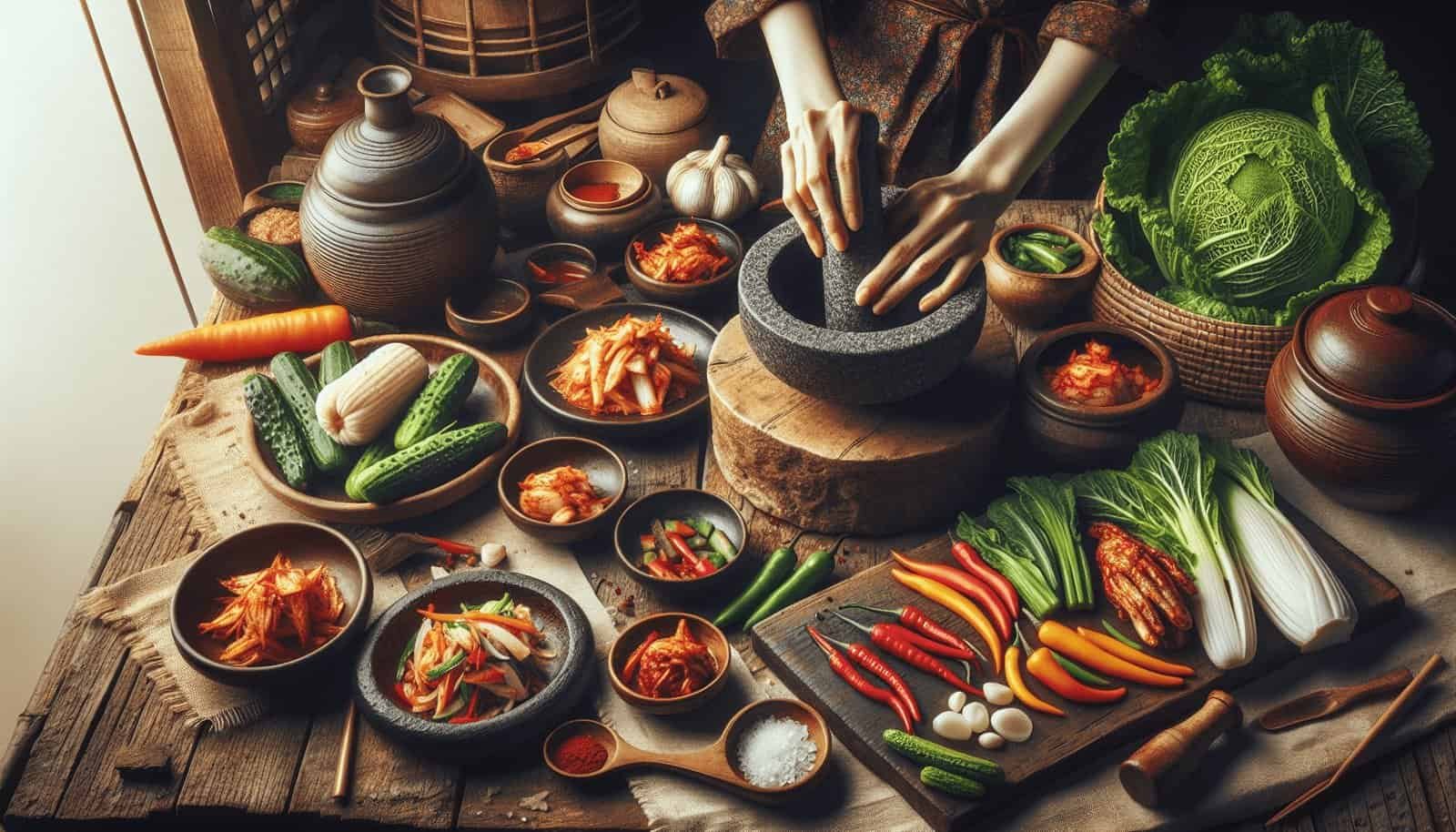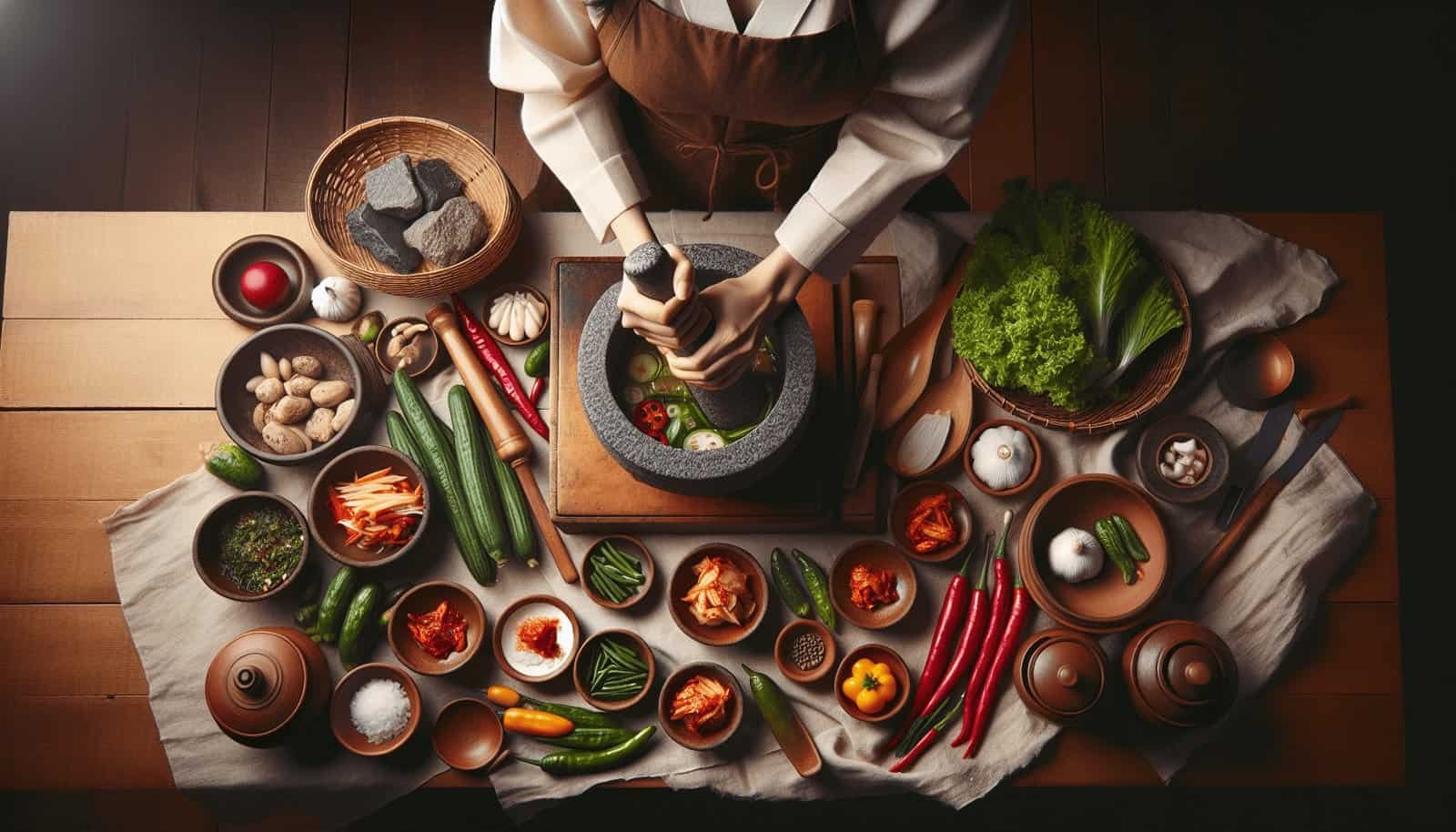Can you recall the first time you tried Korean food? Perhaps you were mesmerized by the sizzling sound of a hot stone bibimbap or enchanted by the sweet and spicy flavors of tteokbokki? As Korean cuisine continues to capture the hearts and taste buds of people around the world, there’s an emerging trend that is fanning the flames of this culinary fascination: regional Korean cooking classes and workshops.
The Global Appeal of Korean Cuisine
Korean cuisine, with its intricate balance of flavors and rich history, has undeniably carved out a significant niche in the global food scene. But what exactly makes it so appealing?
The Hallyu Wave and Its Impact
The Hallyu Wave, or Korean Wave, refers to the global popularity of South Korea’s cultural economy exporting pop culture, entertainment, music, TV dramas, and movies. The rise of K-pop groups and hit series like “Squid Game” and “Crash Landing on You” have put South Korea on the cultural map. As fans consume more Korean media, their interest in the country’s food naturally grows.
Unique Flavor Profiles
Korean cuisine boasts a flavor spectrum ranging from the comforting warmth of soups and stews to the fiery kick of its fermented delights. Staples like kimchi, gochujang, and doenjang aren’t just ingredients; they are iconic flavors that define the Korean palate.
Wellness and Health Benefits
Many Korean dishes emphasize balance and health, often incorporating a medley of vegetables, lean meats, and fermented foods which are rich in probiotics. This focus on well-being aligns well with growing global trends toward healthy eating.

The Allure of Regional Korean Cuisine
While global interest has mostly focused on mainstream dishes, there’s a whole spectrum of regional Korean dishes waiting to be discovered. Let’s take a tour of some notable regional cuisines:
Jeonju: The Birthplace of Bibimbap
Jeonju is synonymous with bibimbap. This iconic dish comprises a harmonious mix of rice, vegetables, meat, and gochujang, all beautifully arranged in a bowl. Jeonju’s bibimbap is particularly renowned for its rich variety of fresh ingredients and the use of a special soybean paste unique to the region.
Jeju Island: Seafood Paradise
Jeju Island’s cuisine is primarily seafood-based, reflecting its abundant marine resources. Dishes like haemul kalguksu (seafood noodle stew) and various types of hoe (raw fish) showcase the island’s culinary treasures.
Busan: Coastal Flavors and Street Food
Busan, a bustling port city, is famous for its fresh seafood and vibrant street food scene. Its unique regional dishes like dwaeji gukbap (pork and rice soup) and ssiat hotteok (seed-stuffed pancakes) provide a delightful mix of textures and flavors.
Andong: The Taste of Tradition
Known for Andong jjimdak (braised chicken), this region’s cuisine is rich and hearty. The use of locally sourced ingredients and traditional cooking methods provides a genuine taste of Korea’s culinary heritage.

The Rise of Regional Korean Cooking Classes
As the allure of Korean cuisine grows, so does the demand for authentic culinary experiences. Cooking classes and workshops focusing on regional Korean dishes have sprung up globally, offering a hands-on way to explore these diverse flavors.
Authenticity and Cultural Immersion
These classes go beyond simply teaching you how to cook; they offer a deep dive into the culture and history behind each dish. Learning the stories and traditions that shape these recipes adds a layer of richness to the cooking experience.
Table: Features of Regional Korean Cooking Classes
| Feature | Description |
|---|---|
| Authentic Recipes | Focus on traditional and locally sourced ingredients |
| Cultural Immersion | Insights into the history and traditions behind each dish |
| Hands-On Experience | Practical cooking lessons from skilled instructors |
| Culinary Storytelling | Storytelling to explain the cultural significance of the dishes |
| Participant Engagement | Interactive and engaging cooking process |
Catering to a Global Audience
These workshops aren’t limited to Korea. Culinary schools and cultural centers around the world have started offering classes, making it easier for people to experience regional Korean cuisine firsthand, no matter where they are.
Skill Levels for Everyone
These classes are typically designed to cater to a wide range of skill levels. Whether you’re a kitchen novice or a seasoned cook looking to expand your culinary horizons, there’s likely a class that’s just right for you.

Why Are These Classes Gaining Popularity?
The rise in popularity of regional Korean cooking classes can be attributed to several factors:
Culinary Exploration
People are eager to expand their palates and explore the vast world of food. Regional Korean cooking classes offer a gateway to new culinary territories. You’ll not only learn new recipes but also new techniques that can elevate your cooking repertoire.
Connection Through Cooking
Cooking is a powerful way to connect with others. These workshops provide a communal environment where you can bond with fellow food enthusiasts. Whether it’s sharing a laugh over a cooking mishap or savoring the fruits of your labor together, the experience fosters a sense of community.
Celebrating Heritage
For the Korean diaspora, these classes offer an opportunity to reconnect with their roots and celebrate their heritage. They allow people to pass down traditional recipes and cooking methods to the next generation, preserving their culinary history.
Travelers’ Experiences
Visitors to South Korea often seek out these classes to bring a piece of their travel experience home. Cooking a dish you learned in a local class can transport you back to that place, making cooking a nostalgic journey.

What to Expect in a Regional Korean Cooking Class
So, what can you expect when you sign up for one of these classes? Here’s a breakdown of a typical class format:
Introduction and Orientation
Classes usually start with an introduction where you’ll learn about the dishes you’ll be preparing. Instructors provide background information and share stories that give context to the recipes.
Ingredient Overview
Next, you’ll likely get a rundown of the ingredients you’ll be using. This can be especially insightful as you’ll learn about unique Korean ingredients and where to source them.
Hands-On Cooking
This phase involves rolling up your sleeves and getting to work. You’ll follow step-by-step instructions, often working in small groups, which makes the experience interactive and engaging.
Tasting and Sharing
After the cooking is done, it’s time to enjoy the fruits of your labor. Tasting the dishes you’ve prepared is an integral part of the experience, offering a moment to reflect on what you’ve learned.

Conclusion
The rise of regional Korean cooking classes and workshops speaks volumes about the growing global interest in Korean cuisine. They offer much more than just cooking lessons; they are cultural experiences that deepen your appreciation for the complexities and nuances of Korean food. Whether you’re captivated by Jeonju’s bibimbap, Jeju Island’s seafood, or Busan’s street food, these classes provide a taste of Korea that is both authentic and enriching. So why not consider taking a class yourself? Through the lens of regional Korean cooking, you’ll not only learn new culinary skills but also embark on a flavorful journey across South Korea’s diverse culinary landscape.
